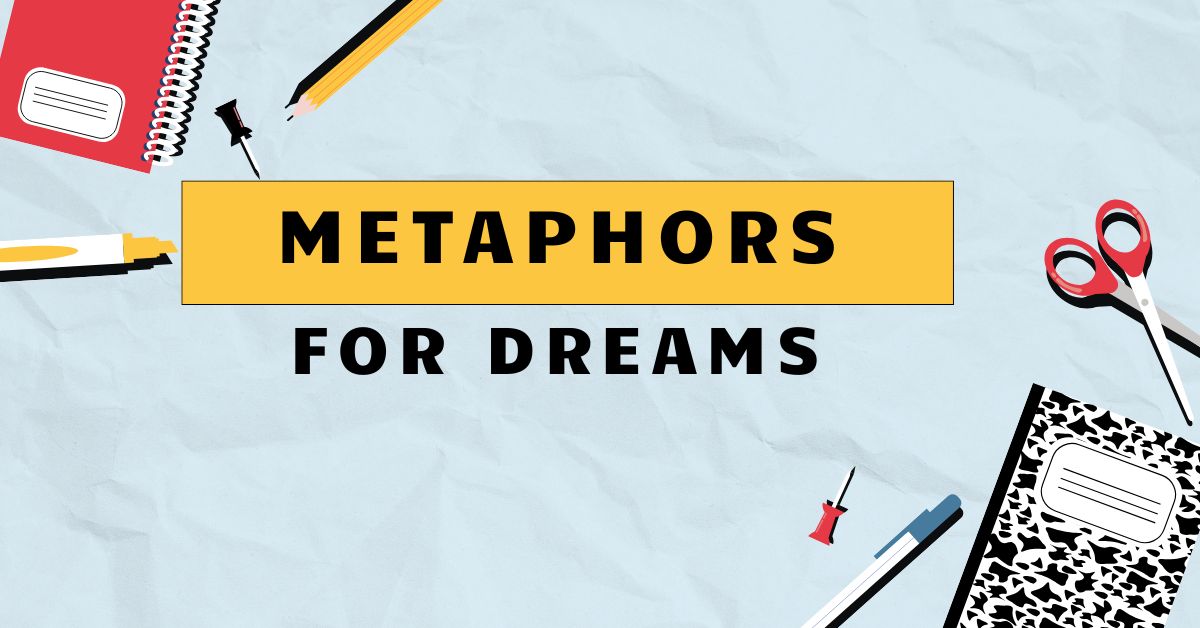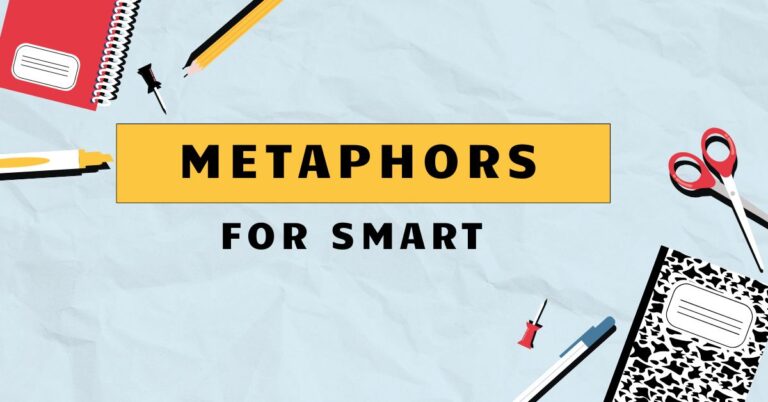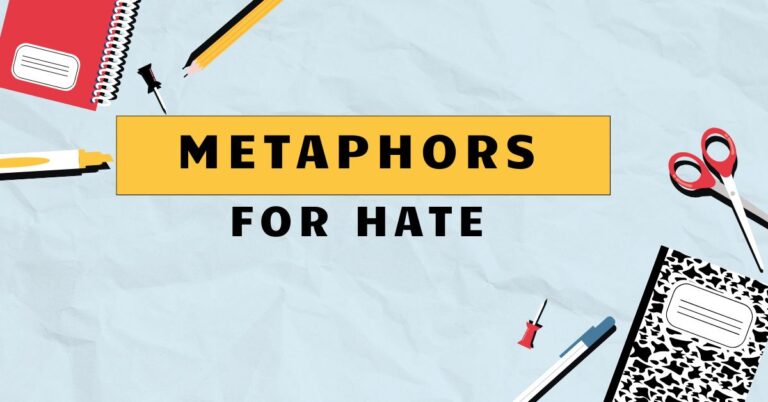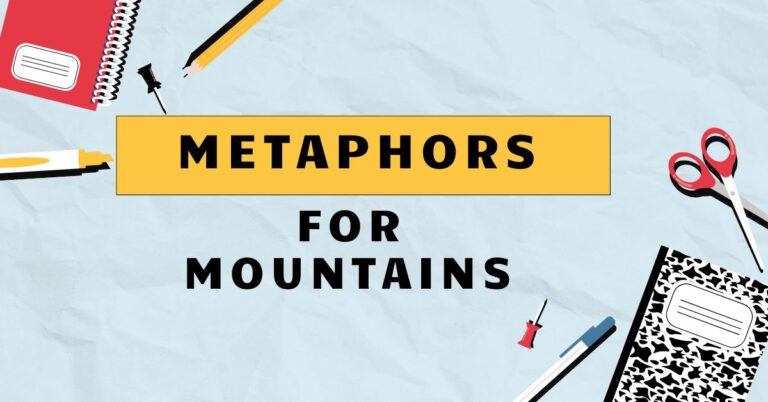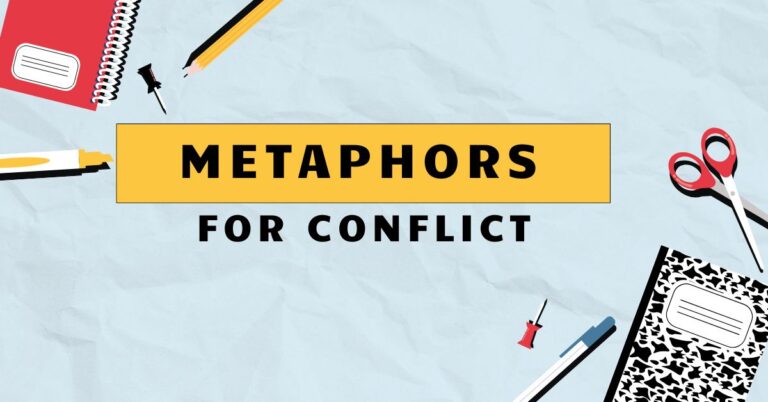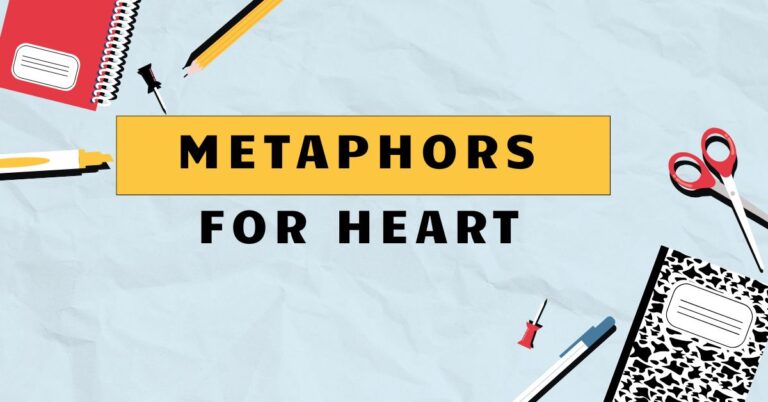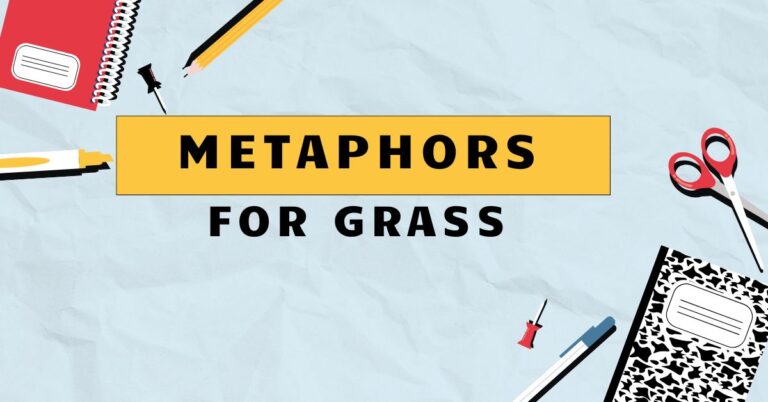31 Dreamscapes in Language: Mastering Metaphors for Dreams
Dreams, elusive and often surreal, are a rich source of inspiration for writers and speakers. Expressing the intangible nature of dreams requires more than just literal language; it demands the evocative power of metaphors.
Understanding how to effectively use metaphors for dreams enhances your ability to communicate abstract ideas, add depth to your writing, and connect with your audience on an emotional level. This article will explore the world of dream metaphors, providing you with the tools and knowledge to master their use.
Whether you’re a student, writer, or language enthusiast, this guide will help you unlock the potential of metaphorical language to describe the fascinating realm of dreams.
Table of Contents
- Introduction
- Definition of Metaphors for Dreams
- Structural Breakdown of Dream Metaphors
- Types and Categories of Dream Metaphors
- Examples of Dream Metaphors
- Usage Rules for Dream Metaphors
- Common Mistakes with Dream Metaphors
- Practice Exercises
- Advanced Topics in Dream Metaphors
- Frequently Asked Questions
- Conclusion
Definition of Metaphors for Dreams
Ametaphoris a figure of speech that directly compares two unlike things without using “like” or “as.” Metaphors create a vivid image or understanding by transferring qualities from one thing to another. When applied to dreams, metaphors help us articulate the abstract, emotional, and often bizarre experiences that occur in our sleep.
They allow us to conceptualize dreams not as literal events, but as symbolic representations of our subconscious thoughts, feelings, and desires. The function of dream metaphors is to translate the intangible into something more tangible and relatable, enriching our communication and understanding of dreams.
Dream metaphors often draw upon common human experiences and concepts such as journeys, reflections, illusions, messages, and escapes. These categories provide a framework for understanding the diverse ways in which dreams can be metaphorically represented.
By using metaphors, we can explore the psychological and emotional significance of dreams, gaining insight into our inner selves. The context in which a dream metaphor is used is crucial for its interpretation.
A dream described as a “turbulent sea” might suggest emotional unrest, while a dream described as a “hidden garden” could represent untapped potential.
Structural Breakdown of Dream Metaphors
The structure of a dream metaphor typically involves two key elements: thetenorand thevehicle. The tenor is the subject being described (in this case, a dream), and the vehicle is the object or concept to which the dream is being compared.
The vehicle lends its qualities to the tenor, creating a metaphorical meaning. For example, in the metaphor “Dreams are a labyrinth,” the tenor is “dreams,” and the vehicle is “labyrinth.” The qualities of a labyrinth (complexity, confusion, the potential to get lost) are transferred to the concept of dreams, suggesting that dreams can be complex and confusing experiences.
Understanding the relationship between the tenor and the vehicle is essential for interpreting and creating effective dream metaphors. The strength of a metaphor lies in the aptness of the comparison and the degree to which it resonates with the audience.
A well-chosen vehicle can illuminate aspects of dreams that might otherwise remain obscure. The power of a metaphor is also in its ability to evoke emotion and create a deeper understanding than literal language can provide.
The relationship between the tenor and the vehicle creates a bridge between the known and the unknown, allowing us to explore the mysteries of the dreaming mind.
Types and Categories of Dream Metaphors
Dreams as Journeys
Dreams are often portrayed as journeys, reflecting the idea that they can take us to different places, times, and realities. These journeys can be literal, involving travel to distant lands, or metaphorical, representing emotional or psychological exploration.
The journey metaphor emphasizes the transformative potential of dreams, suggesting that they can lead us to new understandings of ourselves and the world around us. Common elements of the journey metaphor include paths, destinations, obstacles, and guides, all of which can symbolize different aspects of the dreamer’s experience.
Dreams as Mirrors
The “dreams as mirrors” metaphor suggests that dreams reflect our inner selves, revealing hidden aspects of our personality, emotions, and desires. This type of metaphor highlights the introspective nature of dreams, emphasizing their ability to provide insight into our subconscious mind.
Dreams can reflect our fears, hopes, and unresolved conflicts, offering a symbolic representation of our inner landscape. The clarity and accuracy of the reflection can vary, depending on the dreamer’s level of self-awareness and the intensity of their emotions.
Dreams as Illusions
This metaphor emphasizes the unreal and deceptive nature of dreams. Dreams as illusions highlights the fact that what we experience in our sleep is not necessarily reality, but rather a construct of our minds.
This type of metaphor can be used to explore themes of deception, uncertainty, and the blurring of boundaries between reality and fantasy. The illusory nature of dreams can be both captivating and unsettling, reflecting the unpredictable and often illogical nature of the dreaming experience.
Dreams as Messages
The “dreams as messages” metaphor suggests that dreams are a form of communication from our subconscious mind, offering guidance, warnings, or insights. This metaphor emphasizes the symbolic nature of dreams, suggesting that they contain hidden meanings that can be deciphered.
Dreams can be seen as messages from our past, present, or future, providing clues about our life path and potential challenges. Interpreting these messages requires attention to the symbols, emotions, and narrative structure of the dream.
Dreams as Escapes
Dreams can serve as a temporary escape from the stresses and limitations of waking life. The “dreams as escapes” metaphor highlights the freedom and possibilities that dreams offer, allowing us to explore alternative realities and fulfill our desires.
This type of metaphor can be used to express the therapeutic value of dreams, suggesting that they can provide a safe space for processing emotions and resolving conflicts. The escapist nature of dreams can be both restorative and empowering, offering a sense of liberation from the constraints of reality.
Examples of Dream Metaphors
The following tables provide a comprehensive list of examples of dream metaphors, organized by category. Each example illustrates a different way of using metaphorical language to describe the nature and experience of dreams.
Understanding these examples will help you to develop your own creative and effective dream metaphors.
Dreams as Journeys: Examples
The following table illustrates dream metaphors that use the concept of a journey.
| Metaphor | Explanation |
|---|---|
| Dreams are a winding road. | Suggests that dreams can be unpredictable and full of twists and turns. |
| Sleep is a voyage to another world. | Implies that sleep and dreams transport us to a different reality. |
| My dreams are a pilgrimage to my past. | Indicates a journey back to earlier memories and experiences. |
| Dreams are a trek through the subconscious. | Highlights the exploration of the hidden depths of the mind. |
| Her dream was a rollercoaster of emotions. | Depicts a dream filled with intense and rapidly changing feelings. |
| Dreams are a passport to the imagination. | Suggests that dreams allow us to travel to imaginary places. |
| His dreams were a labyrinth of confusion. | Indicates a complex and disorienting dream experience. |
| Dreams are a river flowing through my mind. | Implies a continuous and ever-changing stream of thoughts and images. |
| My dream was a hike up a steep mountain. | Suggests a challenging and difficult dream experience. |
| Dreams are a map to the unconscious. | Indicates that dreams can guide us to understand our hidden thoughts and feelings. |
| The dream was a long and arduous journey. | Highlights the difficulty and length of the dream experience. |
| Dreams are a solitary walk in the woods. | Implies a personal and introspective journey. |
| His dream was a flight to freedom. | Suggests that the dream provided a sense of liberation and escape. |
| Dreams are a scenic route through my memories. | Indicates a pleasant and nostalgic journey through past experiences. |
| My dream felt like a descent into darkness. | Depicts a journey into negative or troubling emotions. |
| Dreams are a dance through time. | Suggests a fluid and graceful movement through different periods. |
| The dream was a race against time. | Highlights a sense of urgency and pressure within the dream. |
| Dreams are a voyage of self-discovery. | Implies that dreams can lead to a greater understanding of oneself. |
| Her dreams are a train ride to her childhood. | Indicates a journey back to earlier years and experiences. |
| Dreams are a climb to the summit of understanding. | Suggests that dreams can help us reach a higher level of insight. |
| His dream was a meandering path through a forest. | Implies a journey without a clear destination, full of surprises. |
| Dreams are a sailboat on the sea of consciousness. | Suggests a gentle voyage guided by inner awareness. |
| My dream was a rocket launching into the unknown. | Depicts a bold and adventurous journey into uncharted territory. |
| Dreams are a treasure hunt for hidden truths. | Indicates a quest to uncover deeper meanings and secrets. |
| Her dreams are a carousel of fleeting moments. | Suggests a series of brief and rapidly changing experiences. |
Dreams as Mirrors: Examples
The following table illustrates dream metaphors that use the concept of a mirror.
| Metaphor | Explanation |
|---|---|
| Dreams are a mirror reflecting my fears. | Suggests that dreams reveal hidden anxieties and worries. |
| My dreams are a window to my soul. | Implies that dreams offer a glimpse into one’s innermost self. |
| Dreams are a reflection of my deepest desires. | Indicates that dreams reveal hidden wishes and aspirations. |
| Her dreams are a distorted mirror of reality. | Depicts dreams as an altered and often unsettling version of the waking world. |
| Dreams are a looking glass into the past. | Suggests that dreams provide insights into past experiences and memories. |
| My dream was a clear reflection of my anxieties. | Indicates that the dream directly mirrored the dreamer’s worries. |
| Dreams are a shattered mirror, reflecting fragmented thoughts. | Implies that dreams reflect broken or incomplete ideas and emotions. |
| Her dreams are a funhouse mirror, exaggerating her insecurities. | Suggests that dreams amplify and distort feelings of self-doubt. |
| Dreams are a pool reflecting the moon of my subconscious. | Depicts dreams as a serene reflection of the hidden depths of the mind. |
| His dreams are a warped reflection of his daily life. | Indicates that dreams are a distorted version of his everyday experiences. |
| Dreams are a lens focusing on my hidden emotions. | Suggests that dreams bring hidden feelings into sharper focus. |
| My dream was a full-length mirror, showing me my true self. | Implies that the dream revealed a complete and honest view of the dreamer. |
| Dreams are a kaleidoscope reflecting infinite possibilities. | Suggests that dreams offer a vast array of potential outcomes and choices. |
| Her dreams are a photograph capturing her deepest fears. | Indicates that dreams preserve and reveal hidden anxieties. |
| Dreams are a magnifying glass enlarging my worries. | Suggests that dreams amplify feelings of concern and apprehension. |
| His dreams are a prism refracting the light of his experiences. | Implies that dreams break down and reveal different aspects of his life. |
| Dreams are a canvas reflecting the colors of my soul. | Depicts dreams as a vibrant expression of inner emotions and thoughts. |
| My dream was a portrait revealing my hidden strengths. | Suggests that the dream uncovered untapped abilities and resilience. |
| Dreams are a sculpture shaping my understanding of myself. | Implies that dreams mold and refine one’s self-perception. |
| Her dreams are a film projecting her innermost thoughts. | Indicates that dreams display and reveal her private feelings and ideas. |
| Dreams are a looking glass into my future possibilities. | Suggests that dreams provide insights into potential future outcomes. |
| His dreams are a reflection pool of his life experiences. | Implies that dreams gather and reflect the sum of his past events. |
| Dreams are a mirror that shows the reality others hide. | Indicates that dreams reveal truths and perspectives that are often concealed. |
| My dream was a clear pane, revealing my transparent intentions. | Suggests that the dream displayed honest and straightforward desires. |
| Dreams are a shadow cast by the light of day, reflecting what’s hidden. | Depicts dreams as revealing the things that are obscured in daily life. |
Dreams as Illusions: Examples
The following table illustrates dream metaphors that use the concept of illusion.
| Metaphor | Explanation |
|---|---|
| Dreams are a mirage in the desert of sleep. | Suggests that dreams are deceptive and unreal, like a mirage. |
| My dreams are a phantom limb of reality. | Implies that dreams feel real but are not actually part of the waking world. |
| Dreams are a trick of the mind. | Indicates that dreams are a deceptive creation of the brain. |
| Her dreams are a shadow play of emotions. | Depicts dreams as fleeting and insubstantial expressions of feelings. |
| Dreams are a fleeting illusion. | Suggests that dreams are temporary and quickly disappear. |
| My dream was a deceptive fantasy. | Indicates that the dream was misleading and not based in reality. |
| Dreams are a stage for imagined realities. | Implies that dreams provide a setting for unreal scenarios. |
| Her dreams are a masquerade of hidden desires. | Suggests that dreams disguise and reveal underlying wishes. |
| Dreams are a hologram, projecting unreal images. | Depicts dreams as a three-dimensional illusion. |
| His dreams are a smoke screen, obscuring the truth. | Indicates that dreams hide or distort reality. |
| Dreams are a facade hiding deeper meanings. | Suggests that dreams have a superficial appearance that conceals deeper significance. |
| My dream was a house of cards, easily collapsing. | Implies that the dream was fragile and unstable. |
| Dreams are a mirage in the landscape of the mind. | Suggests that dreams are deceptive and unreal within the mental landscape. |
| Her dreams are a phantom echo of her past. | Indicates that dreams are a faint and unreal reminder of past events. |
| Dreams are a sleight of hand by the subconscious. | Suggests that dreams are a clever trick played by the subconscious mind. |
| His dreams are a painted veil over his true feelings. | Implies that dreams obscure his authentic emotions. |
| Dreams are a false dawn, promising what cannot be. | Depicts dreams as a deceptive promise of something unattainable. |
| My dream was a puppet show, controlled by my fears. | Suggests that the dream was manipulated by anxieties. |
| Dreams are a fleeting shadow on the wall of sleep. | Implies that dreams are temporary and insubstantial during sleep. |
| Her dreams are a deceptive mask hiding her true self. | Indicates that dreams conceal her authentic identity. |
| Dreams are a bubble, colorful but easily burst. | Suggests that dreams are beautiful but fragile and temporary. |
| His dreams are a fleeting rainbow after a storm of emotions. | Implies that dreams are a temporary and beautiful escape after emotional turmoil. |
| Dreams are a magic trick performed by the mind. | Indicates that dreams are an illusion created by the brain. |
| My dream was a carnival of unreal sensations. | Suggests that the dream was filled with bizarre and deceptive experiences. |
| Dreams are a smoke and mirrors show of the subconscious. | Depicts dreams as a deceptive performance by the subconscious mind. |
Usage Rules for Dream Metaphors
Using dream metaphors effectively requires attention to several key rules. First, ensure that thevehicle(the object or concept used in the metaphor) is relevant and relatable to thetenor(the dream).
The comparison should be logical and create a meaningful connection in the reader’s mind. Second, avoid clichés.
Overused metaphors lose their impact and can make your writing sound unoriginal. Strive for fresh and imaginative comparisons that capture the unique qualities of the dream you are describing.
Third, consider your audience. The effectiveness of a metaphor depends on the reader’s ability to understand and appreciate the comparison.
Choose vehicles that are likely to be familiar and resonant with your intended audience.
Consistencyis also important. Once you establish a metaphorical framework for describing a dream, maintain that framework throughout your writing.
Mixing metaphors can create confusion and weaken the overall impact. For example, if you start by describing a dream as a “journey,” continue to use journey-related imagery and vocabulary.
Finally, be mindful of the emotional tone you want to convey. Metaphors can evoke strong emotions, so choose vehicles that align with the desired feeling.
A dream described as a “fragile butterfly” will evoke a different emotional response than a dream described as a “raging storm.”
Common Mistakes with Dream Metaphors
One common mistake is usingmixed metaphors, which occur when you combine two or more unrelated metaphors in a way that creates a confusing or nonsensical image. For example, saying “My dream was a rollercoaster that sailed through the clouds” mixes the imagery of a rollercoaster with that of a ship, creating a disjointed and confusing metaphor.
Instead, maintain a consistent metaphorical framework. Another common mistake is usingclichéd metaphorsthat have lost their impact through overuse.
Phrases like “dreams are a world away” or “dreams are a blank canvas” are so common that they no longer evoke a strong emotional response. Strive for originality and creativity in your metaphorical language.
Another frequent error is using metaphors that aretoo obscure or abstractfor the audience to understand. The vehicle should be something that the reader can easily relate to and visualize.
If the comparison is too complex or unfamiliar, the metaphor will fail to communicate its intended meaning. Finally, be careful not to take metaphors too literally.
Remember that metaphors are symbolic representations, not literal descriptions. Avoid overanalyzing the details of the metaphor or drawing conclusions that are not supported by the overall context of the dream.
Here are some examples of incorrect vs. correct usage:
| Incorrect | Correct | Explanation |
|---|---|---|
| My dream was a raging inferno of tranquility. | My dream was a raging inferno of fear. | “Inferno” and “tranquility” are contradictory, creating a mixed metaphor. |
| Dreams are a blank canvas, a dime a dozen. | Dreams are a blank canvas waiting to be painted. | “A dime a dozen” is a cliché that doesn’t fit the artistic imagery of a canvas. |
| My dream was like a purple elephant dancing on the moon. | My dream was like a surreal painting, defying logic and reason. | The image of a “purple elephant dancing on the moon” is too absurd and lacks a clear connection to the dream’s meaning. |
| Dreams are a walk in the park. | Dreams are a twisted maze of thoughts and emotions. | “A walk in the park” is a cliche that doesn’t convey the complexity often associated with dreams. |
Practice Exercises
Test your understanding of dream metaphors with these practice exercises. Choose the best metaphor to complete each sentence, or create your own metaphor based on the prompt.
Exercise 1: Multiple Choice
| Question | Options | Answer |
|---|---|---|
| Her dreams were __________, filled with vibrant colors and impossible scenarios. | a) a black and white film, b) a kaleidoscope, c) a dusty book | b) a kaleidoscope |
| His dream felt like __________, trapping him in a never-ending cycle of fear. | a) a gentle breeze, b) a bottomless pit, c) a sunny meadow | b) a bottomless pit |
| Dreams are __________, offering glimpses into the hidden corners of our minds. | a) locked doors, b) open windows, c) brick walls | b) open windows |
| The nightmare was __________, haunting him long after he woke up. | a) a distant memory, b) a persistent echo, c) a fading photograph | b) a persistent echo |
| Dreams are __________, helping us process emotions and make sense of our experiences. | a) a battlefield, b) a therapist’s couch, c) a crowded marketplace | b) a therapist’s couch |
| My dream was __________, taking me on a wild and unpredictable adventure. | a) a calm lake, b) a raging river, c) a stagnant pond | b) a raging river |
| Dreams are __________, allowing us to explore limitless possibilities and create our own realities. | a) rigid structures, b) boundless playgrounds, c) confining cages | b) boundless playgrounds |
| His dreams were __________, reflecting his anxieties and insecurities. | a) a clear blue sky, b) a stormy sea, c) a peaceful garden | b) a stormy sea |
| Dreams are __________, guiding us towards self-discovery and personal growth. | a) misleading signs, b) guiding stars, c) false prophets | b) guiding stars |
| Her dreams were __________, revealing hidden truths about her past. | a) buried treasures, b) forgotten letters, c) unread books | b) forgotten letters |
Exercise 2: Create Your Own Metaphors
Complete the following sentences with your own dream metaphors.
- Dreams are like __________.
- My dream felt like __________.
- Her dreams were as __________ as __________.
- His nightmare was a __________.
- Dreams are a way to __________.
- Dreams are a pathway to __________.
- Dreams are a gateway to __________.
- The dream’s atmosphere was __________.
- The dream’s message was __________.
- The dream’s impact was __________.
Possible answers to Exercise 2 (these are examples; creativity is encouraged):
- Dreams are like a hidden garden, full of secrets and beauty.
- My dream felt like falling down a never-ending staircase.
- Her dreams were as fragile as glass.
- His nightmare was a dark and twisted forest.
- Dreams are a way to explore the uncharted territories of the mind.
- Dreams are a pathway to self-discovery and understanding.
- Dreams are a gateway to alternate realities and possibilities.
- The dream’s atmosphere was thick with unspoken emotions.
- The dream’s message was a gentle reminder of forgotten dreams.
- The dream’s impact was like a pebble dropped into a still pond, creating ripples of change.
Advanced Topics in Dream Metaphors
For advanced learners, exploring the use ofextended metaphorsandallegoriesin the context of dreams can be particularly rewarding. An extended metaphor is a metaphor that is developed over several lines or paragraphs, allowing for a more complex and nuanced comparison.
An allegory is a narrative in which the characters and events represent abstract ideas or moral qualities. In dream literature and poetry, extended metaphors and allegories can be used to create rich and layered interpretations of the dreaming experience.
Analyzing the works of famous authors and poets who have used dream metaphors extensively can also deepen your understanding. For example, Shakespeare’s use of dream imagery in plays likeA Midsummer Night’s Dreamoffers a wealth of examples of metaphorical language used to explore themes of illusion, desire, and transformation.
Similarly, the poetry of Edgar Allan Poe often uses dream metaphors to evoke a sense of mystery, dread, and the supernatural. Studying these examples can inspire you to experiment with more sophisticated and creative uses of dream metaphors in your own writing.
Furthermore, consider the cultural context of dream metaphors. Different cultures have different beliefs and interpretations of dreams, which can influence the metaphors used to describe them.
Exploring dream symbolism in various cultures can broaden your understanding of the diverse ways in which dreams are conceptualized and expressed through metaphorical language. This cross-cultural perspective can enrich your appreciation of the power and versatility of dream metaphors.
Frequently Asked Questions
- What is the difference between a metaphor and a simile when describing dreams?
A metaphor directly equates the dream to something else (e.g., “Dreams are a labyrinth”), while a simile uses “like” or “as” to make a comparison (e.g., “Dreams are like a labyrinth”). Metaphors are generally considered more powerful and evocative, while similes are more direct and explicit.
- How can I avoid using clichés when creating dream metaphors?
To avoid clichés, brainstorm a wide range of potential vehicles and choose the most original and unexpected comparison. Think about the specific qualities of the dream you want to convey and look for vehicles that capture those qualities in a fresh and imaginative way. Using a thesaurus can help you find alternative words and phrases that are less overused.
- How important is the context when interpreting a dream metaphor?
Context is crucial for interpreting dream metaphors. The meaning of a metaphor can vary depending on the dreamer’s personal experiences, cultural background, and emotional state. Consider the overall narrative of the dream, the emotions it evokes, and any associations you have with the vehicle being used in the metaphor.
- Can a single dream contain multiple metaphors?
Yes, a single dream can contain multiple metaphors, each highlighting different aspects of the dream experience. Using multiple metaphors can create a richer and more nuanced interpretation of the dream, but be careful not to overload the reader with too many comparisons.
- How can I use dream metaphors to improve my creative writing?
Dream metaphors can add depth, emotion, and imagery to your creative writing. Use them to create vivid descriptions, explore complex themes, and connect with your readers on an emotional level. Experiment with different types of metaphors and pay attention to the rhythm and sound of your language.
- Are there any cultural differences in the interpretation of dream metaphors?
Yes, cultural differences can significantly influence the interpretation of dream metaphors. Symbols and images that have specific meanings in one culture may have different or even opposite meanings in another culture. Be mindful of these cultural differences when interpreting dream metaphors, especially in cross-cultural contexts.
- How can I practice using dream metaphors in my daily life?
Start by paying attention to the metaphors you encounter in everyday conversations, literature, and media. Analyze how these metaphors work and try to identify the tenor and vehicle. Then, make a conscious effort to incorporate metaphors into your own speech and writing. Practice describing your own dreams and experiences using metaphorical language.
- What are some common symbols that frequently appear in dreams and can be used as vehicles in metaphors?
Common dream symbols include water (representing emotions), animals (representing instincts or personality traits), vehicles (representing life path), houses (representing the self), and colors (representing different emotions or qualities). These symbols can be powerful vehicles for creating effective dream metaphors.
- How do I know if a metaphor is too abstract or obscure for my audience?
Consider your audience’s knowledge, experience, and cultural background. If you’re unsure whether a metaphor will be understood, try it out on a test audience and ask for feedback. If the metaphor requires too much explanation or doesn’t resonate with your audience, it may be too abstract or obscure.
- Can dream metaphors be used in non-fiction writing?
Yes, dream metaphors can be used effectively in non-fiction writing to explain complex concepts, illustrate abstract ideas, and engage the reader’s imagination. However, it’s important to use metaphors sparingly and to ensure that they are appropriate for the tone and purpose of the writing.
Conclusion
Mastering the art of using metaphors for dreams is a powerful tool for enhancing your communication skills and deepening your understanding of the human psyche. By understanding the structure, types, and usage rules of dream metaphors, you can unlock a new level of creativity and expressiveness in your writing and speaking.
Remember to avoid clichés, be mindful of your audience, and strive for originality in your metaphorical language. The exploration of dream metaphors is a journey in itself, one that can lead to profound insights and a greater appreciation for the power of language.
Continue to practice and experiment with dream metaphors, and don’t be afraid to take risks and push the boundaries of your imagination. The more you engage with metaphorical language, the more natural and intuitive it will become.
By embracing the evocative power of metaphors, you can transform the intangible world of dreams into something tangible, relatable, and deeply meaningful. Keep exploring, keep creating, and keep dreaming!

